A few weeks back, Cam, Wen and I went to Hawaii's Big Island (technically named Hawaii, leading to the awkward phrasing "I went to Hawaii, Hawaii" so beloved by anal retentive people and hated by everyone else) for vacation.
Here are some thoughts on what it was like.
1.
Hawaii is the tropics run by Americans.
It's completely incongruous: you've rainforest (alas, without monkeys; no wild monkeys on any of the islands) and you can drive there on a brand-new, well-maintained highway. Plus you can drink the tap water without worry, gas is plentiful and anything is available 24 hours a day.
But it's still paradise.
It also leads to funny situations where you're sitting in a remote beach and there are signs like the following:

Rules. Lots of rules. Not to be followed, but to be posted to limit liability.
2.
I could have spent the entire day watching the surf.
It literally crashes down.
Growing up, the nearest ocean was the Atlantic, which lacks the enormous breadth and deep trenches that seem to be required to generate truly pounding surf.
Hawaii, on the other hand, is the first interruption faced by a wave that has been gathering steam since starting life a few thousand miles away on the North American coast. It's anger at being interrupted results in a fascinating display for tourists (I doubt that this is how waves really work, but the romantic in me likes to imagine it as such).
The northeastern side of the island is where the waves come aground; one of the best places to watch it is Laupahoehoe Point County Park:
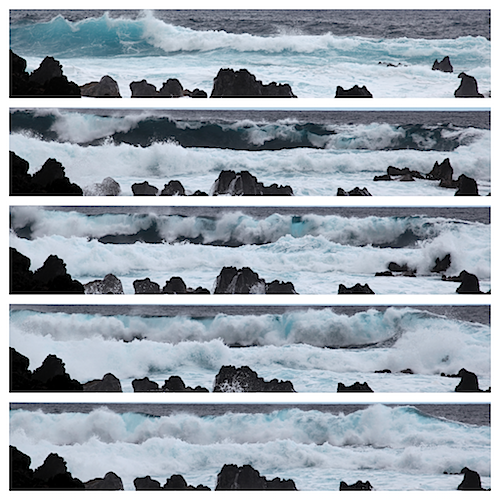
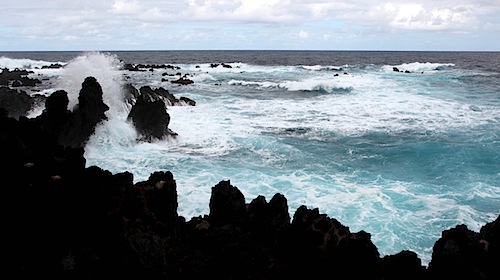
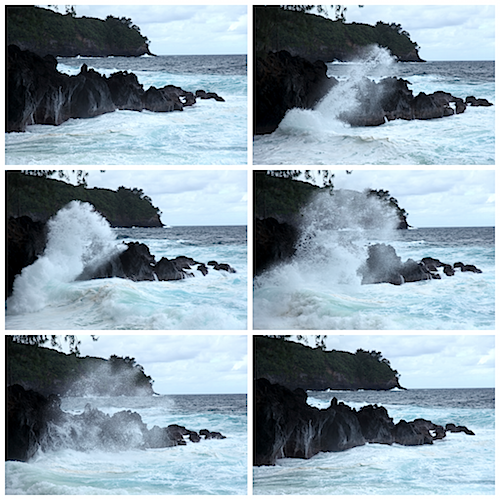
Not too far away is Kolekole Beach Park, nestled into a rainforest-ringed valley. On the rocky beach you can watch the breakers come in:
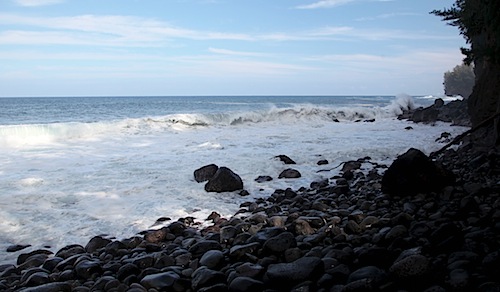
I tried to capture all of this in a video; it's way more impressive when you're actually there in person:
3.
The Big Island is one of those rare places where they actually are creating more land. And, unlike New York or Tokyo, they don't do it by dumping garbage in the harbour. Rather, they simply let volcanoes dump more lava into the sea.
The action takes place inside the literally and aptly named Hawaii Volcanoes National Park. The entire park serves as a not-so-subtle reminder that the earth is, at it's core, molten rock and from time to time this breaches the surface with catastrophic results.
You can walk through the Kilauea crater and stand on a moonscape that has only existed since 1959 - when it was a lake of flaming rock.

To get there you walk along a trail that's an abandoned road. It was the main thoroughfare for the park until a 1980 eruption took out a good portion of it. Now it's like a tropical version of The Road, with the jungle slowly reclaiming it:

Elsewhere you can see the main caldera - and you were able to walk up to it until 2010 when a new eruption rendered the ground unstable and reminded everyone that this is a temporary park.
The best view is from the park's lodge, which bills itself as "one of America's best volcano-viewing lodges" (I didn't realize there were so many).

As you stand above the calderas you can see steam leaking from below; elsewhere you'll stumble upon steam vents as you meander through the park. Nothing about the park feels stable.

We didn't make it down to the water, where lava has been spilling into the sea in a continuous eruption since 1983 (the eruption was a long way from the road the day we visited). We did, however, make it to the Thurston Lava Tube, which gives you a keen sensation of how the topology beneath your feet is quite different from what you normally imagine (imagine if NYC's subways were instead full of lava):

The entire park reeks of impermanence…
(If you go, make sure to hike the Kilauea Iki Trail; it's the one that goes through the caldera in the first photo. It's half volcano and half fern-y rainforest. Best hike we did on the island)
4.
I'm not sure what you imagine when you think of South Pacific paradise, but I imagine tropical valleys with sheer cliffs that meet the sea. And the Big Island has seven of these chained back-to-back on its northeastern coast.
At the top of the island is the Pololu Valley. It's just your typical jungle-covered-cliffs-that-lead-down-to-a-beach-with-pounding-surf type of valley. There's an easy trail down (as long as it's not wet).



The surf here is way too strong to swim in; instead, you stroll along the beach, watch the waves and gaze into the valley.



Ditto for the opposite end of the seven valley range: Waipio Valley.
This has to be one of Hawaii's most-photographed spots.

It's a steep four wheel drive track down (and since most rental car companies won't let you drive there, you'll likely be walking). Like the other valleys, the beach is dangerous to swim in; locals drink beer in the neighbouring pine forest.

The valley itself is spectacular. It's home to several native Hawaiians; apparently if you go far enough back there's a several thousand foot waterfall to be discovered.

Note to hikers: you can actually hike from Waipio to the neighbouring valley. It's an overnighter and you need to camp. I'll be coming back to do it some time.
5.
Hawaii explodes with colour.
All around you are flowering plants splashing red, dripping orange, trailing white. They grow outside your house, in the ditch beside the road, in the trees above you, in gardens, forest and beyond.
Curiously, many are non-native. Like much of what you find on the island they've been imported by visitors from Polynesian to British to American - and then exported via film to become our image of the tropics. The whole island is a curious simulacra of paradise in paradise.



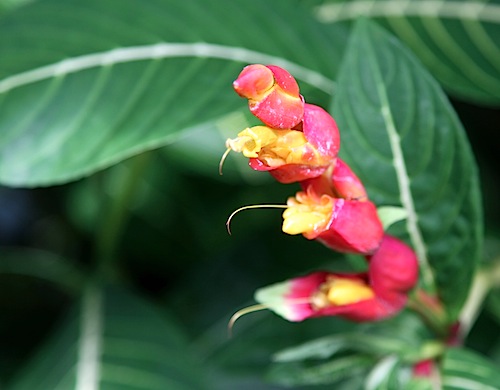


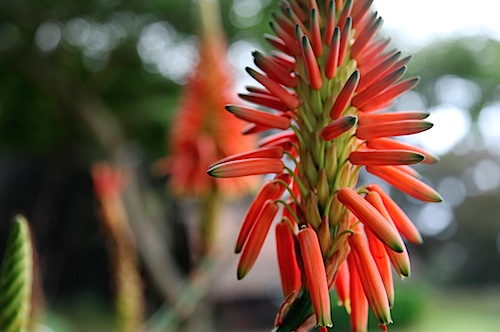

One of the best places to see all these flowers (and by the thousands) is the Hawaii Tropical Botanical Garden. Over the past forty years a trash-strewn valley has been transformed into the lush home to countless tropical flowers. And the drive down the highway to get these is unforgettable (think rainforest, ocean-view cliffs and narrow roads).
The colour isn't limited to the flowers.
The sunsets set the sky ablaze and paint it a tableau of oranges, reds and purples.


You get a sense for what Paul Gaugin was trying to do in relatively nearby Tahiti.
6.
The story of Hawaii is one of water.
The islands are ringed with it. The tropical heat evaporates water to form clouds - which hit the eastern shores of the islands and cause rain. This leads to massive waterfalls and rainforest which lead to rivers and streams that drain to the sea.



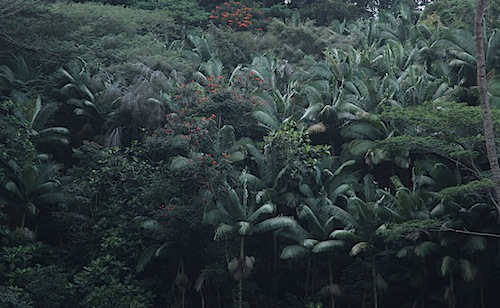

Or at least that's the story on the windward side of the island.
The leeward side of the island is a desert.
The mountains are so tall - 13,000 plus feet or one-and-a-half Whistler's for my Vancouver friends - that no clouds can easily get past them. All the rain drops on one side and you're left with desert on the other.
There are literally cacti up on the hills, starting right at the point where the clouds end:

As you descend to the leeward beaches you find that they're in a lava field that dates back at least a thousand years. Trees have grown there, but the land has a scorched feeling to it.
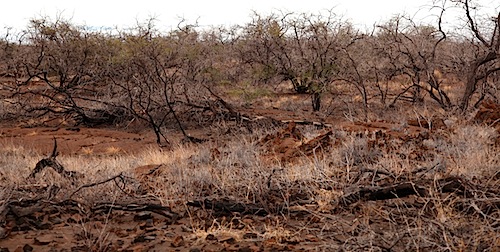

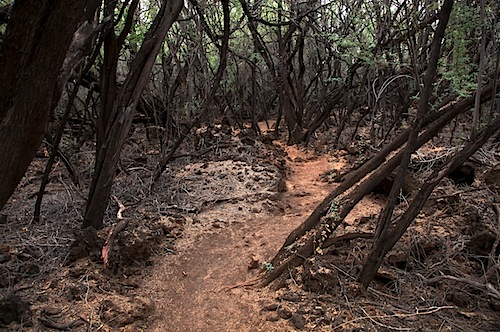
Apparently there are 22 different climate zones around the island. This leads to severe cognitive dissonance as you find yourself going from rainforest to temperate forest to desert in the span of an hour.
For instance, here's what it looked like near where we were staying: 3,000 feet up and right at the break between wet and dry. If I didn't tell you this was Hawaii, you'd be hard-pressed to guess.

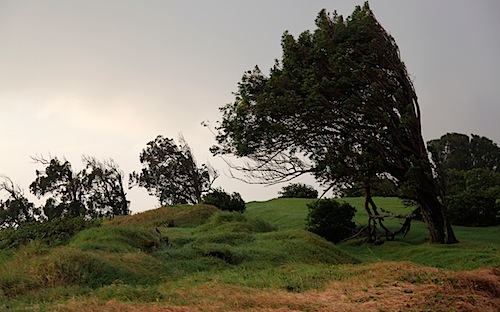
7.
Hawaii is a little bit country. The culture's a bit like a tropical version of the interior of BC.
Lots of dudes with pickup trucks. But instead of blue jeans it's athletic shorts (basketball styles; nice and long). Ditto for a sleeveless t-shirt instead of a plaid shirt. Still playing country on the radio, but it's got a polynesian lilt.
8.
And speaking of the Polynesians, they were the original people to colonize Hawaii. While not killing one another (life was apparently cheap to them) they occasionally took time to carve petroglyphs.
These still abound although no one's sure what they mean or exactly when they date from (science has determined that the lava flow in which they're carved is approximately one thousand years old).
You can literally walk out of a four star resort and just up a path you stumble upon a plain of them.
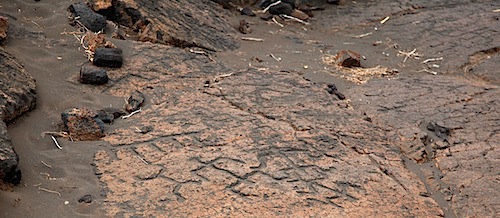

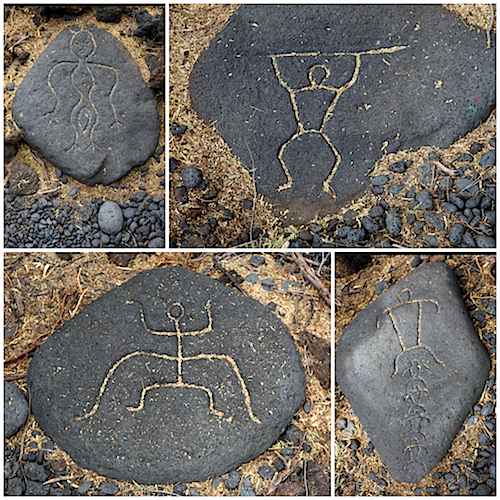
9.
I have finally had my Gordon Watt moment.
For those unfamiliar with this term, Gordon is my dad. He's a doctor and, in his professional life, is exacting. However, in his personal life he has occasionally been known to be a little clumsy.
Notable moments include a childhood attempt to hike the Rideau Trail (Ottawa to Kingston) with little more than a bag of trail mix (it's a poorly maintained 300km trail) and a demonstration of bear spray while I stood downwind.
That I am my father's child was reminded to me on this trip.
We were at the Volcanoes National Park and wrapping up the day. We'd been hiking for hours and everyone was getting tired; Cam was a little cranky and hadn't been sleeping super well.
We bundled him into the car and started driving back along the highway.
I asked Wen if she could pass me my sunglasses.
She said that she didn't have them; I thought nothing of it.
And that's when, out of the corner of my eye in the rearview mirror I saw a little flash.
Something that just didn't look right.
A black thing appeared to have come flying off the roof of our car.
With sudden horror I realized that I was driving down the highway at one hundred kilometres an hour with our SLR camera and my sunglasses sitting on the roof, where I'd left them while getting Cam into the car.
Only now the sunglasses were somewhere on the side of the road and who knows what it would take to dislodge the camera.
I let the car drift to a halt on the should (taking care not to decelerate too quickly).
Wen asked why we were stopping and I sheepishly explained.
The camera was still there. A few hundred metres back was a slightly scratched (frames only) pair of sunglasses.
Must be the genes.
10.
The eastern side of the Big Island is a set of resorts set in a lava field. The resorts are there because its the leeward side of the island meaning its both drier (literally 1% of the precipitation of just a few kilometres away) and has swimmable beaches.
Development here has been a source of contention with the locals. They've settled on an agreement where by all the beaches are actually open to anyone but this is poorly marked so that most people never walk onto another resort. (Insider's tip: there's a trail that connects all of them).
These resorts also happen to be smack dab in the middle of a resting and nesting ground for sea turtles. The turtles know better than to show up on a crowded beach; instead you find them in the unoccupied interstices between resorts. They just sit there while three deck chairs away seniors sip mai tais, oblivious to the wildlife.
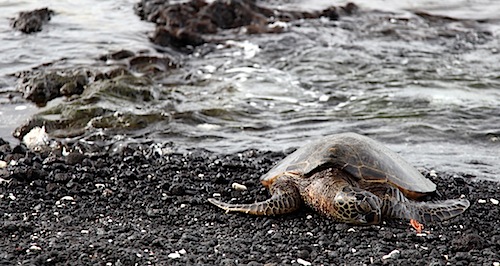

11.
An obligatory note on the food.
I'm not a huge seafood fan, but I ate more than my share of sushi.
Standouts include Sushi Rock in Hawi where they're doing incredible things with macadamia nuts in sushi (it works; they call it "crunch"):

Ocean Sushi in Hilo is another great place; it's a hole in the wall that serves some of the best sushi I've ever had.
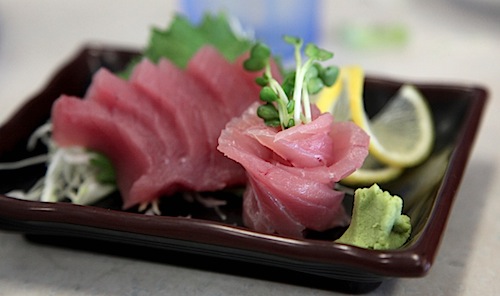
The secret to both these places: ahi tuna. The ahi on the Big Island is like none I've ever tasted before. It literally falls apart in your mouth as you eat it.
The other popular food: beef.
Vast swathes of the island are covered in cattle ranches. Due to the strong Japanese heritage on the island (the Japanese were first brought to the island to work in sugar mills; one quarter of islanders can apparently claim descent), the marinade of choice is teriyaki.
You also find that the popular cut is not a chunky sirloin steak but a rail thin, long stretch of beef that's simply known as "grilling meat". It cooks in minutes on the barbecue and you can frequently buy it already marinated in teriyaki or even kalbi.
It's delicious.
There are also two curious connections between Hawaii beef and my current hometown of Vancouver.
First, it seems that George Vancouver is actually responsible for bringing beef to the island. Apparently unsatisfied with discovering his namesake town, he turned left and later found himself on the Big Island. He dropped off a few head of cattle - they were more like wild animals - and they soon took over the island. The natives feared wild bulls for generations.
The other tenuous connection?
Douglas Firs.
They are found all around the city and are named after David Douglas, a Scottish botanist who likely never visited the city but brought his namesake pine back to Britain in 1827.
There are no Douglas Firs in Hawaii, but there are the remains of David Douglas.
Seems he went hiking one day and fell into a trap that was set for one of Vancouver's wild bulls.
Unfortunately there was already a bull inside and it apparently gored him to death. Poor man.
And rather than ending on that despondent note, let's talk coffee.
The Big Island grows its own coffee and it completely lacks bitterness. If it's 100% Kona coffee literally all you will taste is coffee flavour; nothing bitter at all.
I'm not sure how I feel about this; I found it a little startling that the coffee had no bitter edge. I'll have to go back and try more.
12.
Let me close with a few photos.



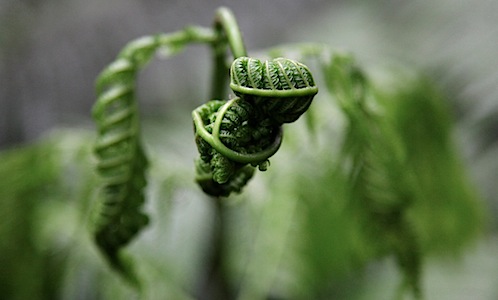

13.
If you want to know any of these places, I built a Placeling tour for you. Click and get it on your phone:
